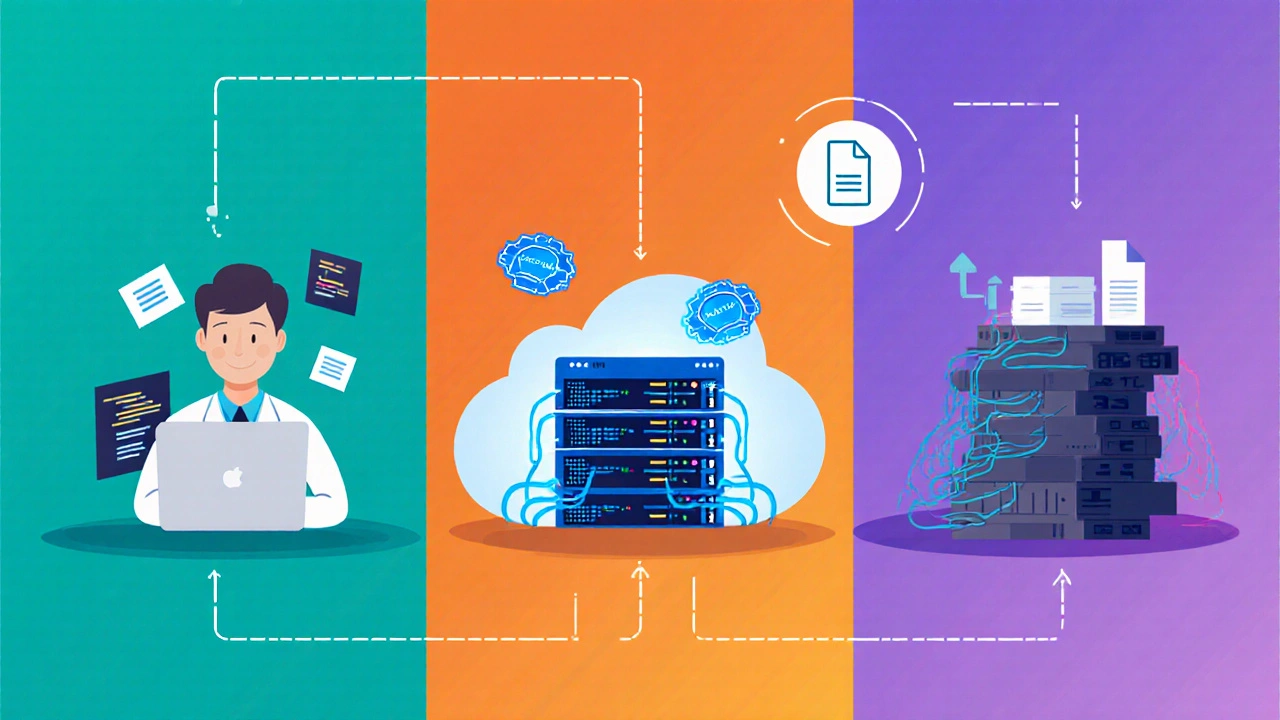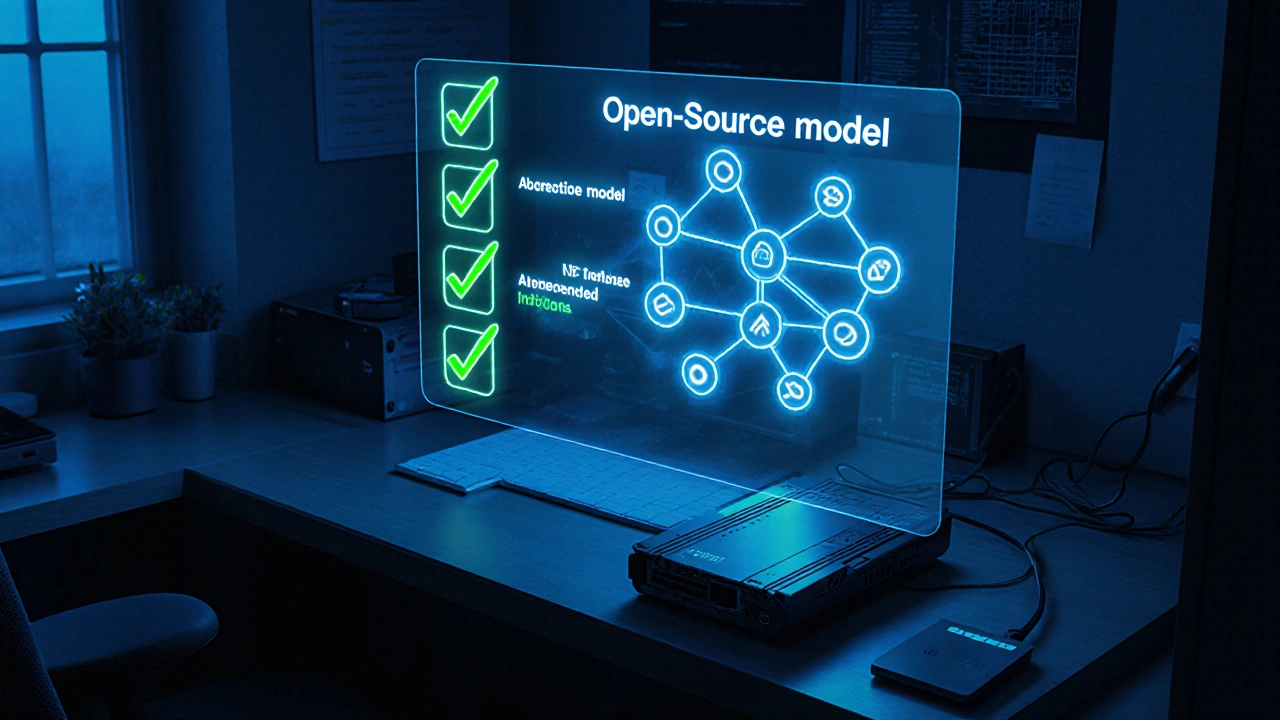AI Cost Explained: How Much Does Artificial Intelligence Really Cost?
 Oct, 12 2025
Oct, 12 2025
AI Cost Calculator
Calculate your AI project costs based on usage patterns, service selection, and infrastructure needs. Use real data from major providers to budget effectively and avoid hidden expenses.
Cost Breakdown
Service Cost: $0.00
Compute Cost: $0.00
Storage Cost: $0.00
Total Estimated Cost: $0.00
Monthly Budget Buffer: $0.00
Key Takeaways
- AI projects involve three main cost buckets: talent, infrastructure, and data.
- Many popular AI services offer free tiers, but they often come with usage limits and hidden fees.
- Compute hardware like GPUs and cloud‑based compute time are the biggest hidden expenses.
- Open‑source models and on‑premise inference can dramatically lower long‑term spend if you have the right expertise.
- A clear budgeting checklist helps avoid surprise charges and keeps AI projects sustainable.
When someone asks “Does AI cost money?” the answer isn’t a simple yes or no. The price you pay depends on the type of AI you’re using, the scale of your project, and the hidden costs that most people overlook. This guide breaks down every line‑item you might encounter, shows where free tools end, and gives you a step‑by‑step budgeting roadmap.
What "AI cost" actually means
Artificial Intelligence is a branch of computer science that enables machines to mimic human intelligence, from simple rule‑based bots to massive language models. When you talk about AI cost, you’re really talking about the sum of four cost categories:
- Talent: salaries for data scientists, ML engineers, and prompt engineers.
- Infrastructure: cloud compute, GPUs, storage, and networking.
- Data: acquisition, cleaning, labeling, and licensing of datasets.
- Software & Licensing: API subscriptions, model licensing fees, and platform charges.
Each bucket can vary wildly based on whether you’re building a prototype in a notebook or deploying a production‑grade service that handles millions of requests per day.

Free AI tools vs. paid services
There’s a growing ecosystem of AI services that let you start for free. That’s great for learning, but the free tier often caps usage or removes premium features you need for a real product.
| Service | Free Tier Limits | Paid Tier Pricing | Typical Use Case |
|---|---|---|---|
| OpenAI ChatGPT | 20k tokens/month | $0.002 per 1k tokens (Pay‑as‑you‑go) or $20/month for 100k tokens | Customer support chatbots |
| Google Gemini | 15k characters/day | $0.0015 per 1k characters | Content generation |
| Microsoft Azure AI | 5k requests/month | $0.0008 per request + compute | d>Enterprise analytics |
| HuggingFace Inference API | 30k inference seconds/month | $0.0004 per second + storage | Prototype testing |
Notice how the paid tiers still charge per‑use (often called “pay‑as‑you‑go”). Even if the free tier feels unlimited, you’ll hit throttling, rate limits, or missing features like custom fine‑tuning.
Hidden costs that sneak up on you
Most people spot the obvious subscription price, but the real bill often comes from the hardware and data side.
- GPU rental: A singleNVIDIAH100 can cost $3-$5 per hour on major clouds. A month‑long fine‑tuning run can easily exceed $1,000.
- Cloud Computing overhead: Storage for training data, network egress fees, and serverless function costs add up quickly, especially when models generate large amounts of output.
- API throttling fees: Some providers charge extra for higher request‑per‑second limits, which is common in real‑time applications.
- Data licensing: High‑quality labeled datasets can range from a few hundred dollars for niche domains to $100k+ for industry‑scale corpora.
- Compliance & security: Audits, encryption, and GDPR‑compliant storage introduce additional operational spend.
When you add these line‑items together, a modest proof‑of‑concept can climb from $200 to $5,000 within a month.
How to budget for an AI project
Use the checklist below to avoid surprise invoices. Treat each bullet as a separate budget line.
- Define the scope: What model size, latency, and daily request volume do you need?
- Estimate compute: Use cloud price calculators. For a 1‑B parameter model, expect ~2hours of GPU time per 1k training examples.
- Calculate data costs: Include acquisition, storage (GB/month), and labeling (per‑hour rates).
- Plan for talent: Average ML engineer salary in the UK is £80k/year; factor in 20% overhead.
- Choose a pricing model: Pay‑as‑you‑go, reserved instances, or on‑premise hardware lease.
- Add a buffer: 15-20% of total for unforeseen usage spikes.
Plug your numbers into a simple spreadsheet and you’ll have a realistic budget before you write a single line of code.

Cost‑effective alternatives
If you’re tight on cash, consider these strategies:
- Open‑source models like LLaMA2, Falcon, or Mistral can be run on a single consumer‑grade GPU for inference, cutting cloud spend dramatically.
- Use knowledge distillation to shrink a large model into a 10‑fold smaller version with comparable accuracy for specific tasks.
- Leverage edge devices (e.g., NVIDIA Jetson) to run inference locally, eliminating data‑transfer fees.
- Participate in community grants: Many cloud providers offer free credits for research or early‑stage startups.
- Combine free tiers with hybrid deployment: Run low‑traffic workloads on free cloud tiers and switch to paid compute only during peak periods.
These approaches shift costs from recurring cloud bills to a one‑time hardware or licensing investment, which can be more predictable for small teams.
Next steps & troubleshooting
After you’ve drafted a budget, run a short pilot (24‑hour window) on the chosen platform. Track three metrics: total spend, latency per request, and error rate. If any metric exceeds 10% of your target, revisit the corresponding cost bucket.
Common pitfalls and fixes:
- Unexpected token overage: Set API usage alerts in the cloud console.
- GPU throttling: Switch to a spot‑instance marketplace for cheaper compute.
- Data quality issues: Allocate extra time for cleaning; cheap data often leads to higher downstream model error.
Frequently Asked Questions
Is there any truly free AI service?
Most providers offer a free tier, but they all have limits on tokens, requests, or compute time. For truly unlimited usage you’ll need to host an open‑source model yourself.
How much does a small‑scale AI project cost in the UK?
A hobby‑level project using free tiers and a single consumer GPU can stay under £100. A production prototype with cloud compute and paid API access typically ranges from £1,000 to £5,000 per month.
Do I need a data scientist to use AI APIs?
For simple tasks like text generation or image tagging, a developer can integrate the API directly. Complex pipelines, custom fine‑tuning, or bias mitigation usually require data‑science expertise.
What hidden costs should I watch for?
GPU rental, storage egress, data‑labeling fees, API throttling charges, and compliance audits are the most common surprise expenses.
Can I run large language models locally for free?
Running a 7‑B parameter model on a modern desktop GPU is possible and cheap after the initial hardware purchase. Larger models (30B+) still need cloud or specialized hardware.